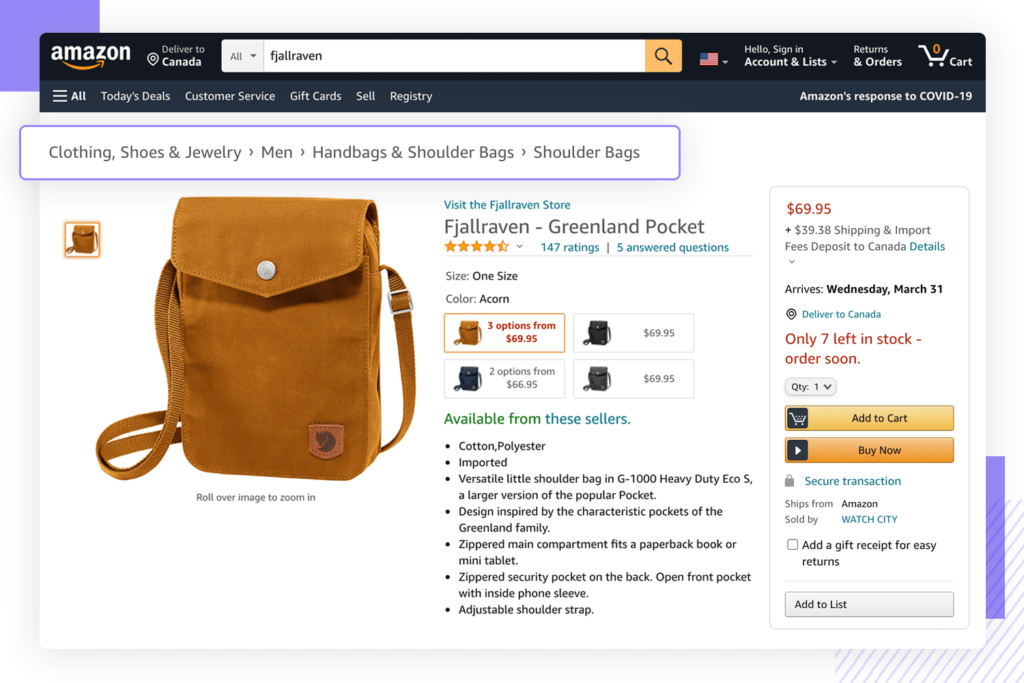
In today’s digital age, businesses must have an optimized website to remain competitive and increase online traffic. Among the significant aspects of digital marketing, Search Engine Optimization (SEO) is essential in Enhancing online presence and drawing in organic traffic to a website. Website navigation is a critical element of SEO, and SEO breadcrumbs are a vital component that Plays a pivotal role in improving website navigation.
This blog post will delve into different facets of SEO breadcrumbs, including their definition, functionality, and different types. We will also delve into how SEO breadcrumbs can help improve SEO and provide some best practices for using breadcrumbs effectively. Lastly, we will tackle some commonly asked questions regarding SEO breadcrumbs.
So, let’s begin.
Understanding SEO Breadcrumbs: How They Work And Different Types
Breadcrumbs are a website navigation technique that displays a hierarchical trail of links to show the user’s location within the website’s structure.
These are typically displayed near the top of a webpage, just below the header or navigation menu. They enable users to navigate a website effortlessly and comprehend where they are on the website.

Let’s now understand how it works:
Breadcrumbs provide users with a hierarchical link trail showing the user’s location within the website’s structure.
This trail of links can help users understand how they got to their current location and how they can navigate to other pages on the website.
As an illustration, when a user navigates a product page, the breadcrumbs may display as follows: Home > Category > Subcategory > Product. This breadcrumb trail shows the user that they are on a product page, and they can easily navigate back to the subcategory or category pages.
Breadcrumbs also aid search engines in comprehending the organization of a website and how pages are related to each other. That can help search engines create more accurate and relevant search results, leading to more traffic and higher rankings for a website.
Now let’s understand different types of breadcrumbs
Three primary types of breadcrumbs exist
- location-based,
- attribute-based, and
- history-based breadcrumbs.
Location-Based Breadcrumbs
Location-based breadcrumbs indicate users’ current position within the website’s hierarchy, starting from the home page. They are typically used on large websites with a deep hierarchy. They help users keep track of their location and find their way back to previous pages easily.
Here Is An Example Of A Location-Based Breadcrumb Trail:
Home > Category > Subcategory > Product
In this breadcrumb trail, the user is on a product page that belongs to a specific subcategory, which in turn belongs to a larger category.

Attribute-Based Breadcrumbs
Attribute-based breadcrumbs show users the attributes of the current page, such as color or size. They are typically used on e-commerce websites with a large inventory of products with different characteristics. They help users refine their search by clicking on a specific attribute in the breadcrumb trail.
Here Is An Example Of An Attribute-Based Breadcrumb Trail:
Home > Category > Subcategory > Color > Red > Product
In this breadcrumb trail, the user is on a product page that belongs to a specific subcategory and has the attribute of color. Users can refine their search by clicking on the “Red” attribute link in the breadcrumb trail to view all products in red.

History-Based Breadcrumbs
History-based breadcrumbs show users their browsing history on the website, allowing them to quickly navigate to previously visited pages. They are typically used on websites with a linear structure, such as news websites or blogs.
Here Is An Example Of A History-Based Breadcrumb Trail:
Home > News > World News > Article Title
In this breadcrumb trail, the user is on a news article page that belongs to a specific category and subcategory. The user can easily navigate to the subcategory or category page by clicking on the corresponding link in the breadcrumb trail.

How Breadcrumbs Help In SEO
Breadcrumbs are a valuable tool for enhancing the user experience and increasing website search engine visibility.
However, here are a few ways that Breadcrumb helps with SEO:
- Improved User Experience
One of the primary benefits of using breadcrumbs is improving the user experience of a website. Breadcrumbs offer users a distinct pathway to navigate through through a website, making finding the content they seek easier.
A positive experience on a website Enhances the probability of users prolonging their stay, Remaining on the site, interacting with the content, and eventually converting, resulting in a higher conversion rate.
Enhanced user experience can increase engagement, lower bounce rates, and increase customer satisfaction.
- Better Site Navigation
They provide users with an easy way to navigate a website’s hierarchy. That is particularly useful for large websites with many pages and sub-pages.
By displaying the breadcrumb trail, users can easily see where they are on the site and how to return to previous pages.
This can help reduce frustration and confusion, leading to a better user experience. Additionally, breadcrumbs can help improve the site’s internal linking structure, leading to better crawlability and indexing by search engines.
- Increased Search Engine Visibility:
It can help increase a website’s visibility in search engines. By providing a clear and organized structure of the website’s hierarchy, search engines can better understand the content on the site and how it is organized.
That can help search engines create more relevant and accurate user search results. Additionally, using breadcrumbs can help increase the click-through rate of search results, as users can see the website’s hierarchy before clicking on the result.
Best Practices For Breadcrumbs In SEO
- Keep It Simple
To ensure that your breadcrumbs provide a good user experience, it’s essential to keep them simple and easy to understand.
Employ clear and succinct labels for each breadcrumb link, and refrain from using jargon or technical language your users may need help understanding.
- Use Breadcrumbs Consistently Across Your Website
Maintaining consistency is crucial when employing breadcrumbs on your website. Use the same breadcrumb trail throughout your website to avoid confusing your users.
Ensure that the breadcrumb trail is always displayed in the same position and has the same appearance and functionality.
- Use Schema Markup For Breadcrumbs
Using schema markup for breadcrumbs helps search engines understand your website’s navigation structure, which can improve your website’s search engine visibility.
To add schema markup to your breadcrumbs, use the “BreadcrumbList” schema type and add the appropriate properties for each breadcrumb link, such as “name” and “URL.”
- Test Your Breadcrumbs To Ensure They Work Properly
It’s essential to test your breadcrumbs to ensure they work correctly and provide a smooth user experience.
Test your breadcrumbs on different devices and screen sizes to ensure that they display correctly. Also, test your breadcrumb trail to ensure it accurately reflects your website’s navigation structure.
FAQs On SEO Breadcrumbs
Q1: Do Breadcrumbs Have Any Impact On Website Speed?
A: Breadcrumbs typically have a minimal impact on website speed since they are lightweight. However, it’s essential to ensure that the implementation of breadcrumbs keeps up the website’s loading time, especially on mobile devices.
Q2: Can Breadcrumbs Be Harmful To SEO If Implemented Incorrectly?
A: Yes, breadcrumbs can be harmful to SEO if implemented incorrectly.
For example, if the breadcrumb trail needs to be more accurate or reflect the website’s hierarchy, it can confuse users and search engines.
Implementing breadcrumbs correctly is crucial to using a clear and concise format, placing them at the top of the page, and ensuring they accurately reflect the website’s hierarchy.
Q3: Are Breadcrumbs Still Relevant For SEO In 2023?
A: Yes, breadcrumbs are still relevant for SEO in 2023. They are a valuable tool for improving the user experience, increasing search engine visibility, and providing context for website content.
Final Thoughts
Now that you know everything about SEO Breadcrumbs, then why don’t you try it out on your website and see what results reflect it?
If you need help understanding this blog, please leave your questions in the comment section. We will be happy to help you.
Thanks for reading 🙂








No Comments